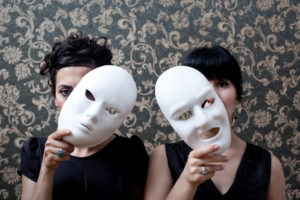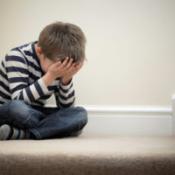 Anger is a strong emotion, one that has been conditioned or taught out of many women from an early age. We are taught instead to cry, stuff it, and otherwise dissemble, or hide our true feelings. It seems that, for many women, anger is simply not an acceptable emotion to have, much less show.
Anger is a strong emotion, one that has been conditioned or taught out of many women from an early age. We are taught instead to cry, stuff it, and otherwise dissemble, or hide our true feelings. It seems that, for many women, anger is simply not an acceptable emotion to have, much less show.
As a woman and as a therapist, I have often delved into the angry sides of the women I work with, helping them explore avenues to use and express that anger more honestly and safely. I encourage women to acknowledge their anger, even as a secondary emotion, because I view it as part of a complete human’s vast array of complex emotional experiences.
How Anger and Vulnerability Intersect
Recently, I have started to wonder about the intersection of female anger and vulnerability. Through my own work with a therapist, I began to recognize that my own anger often masked the very real hurt I was feeling, and that I would often choose anger over vulnerability. In those moments, I would feel strong, powerful, and righteous. But then I would be left feeling empty, incomplete, and full of anxiety that I had acted poorly. Expressing my anger, especially before I had time to reflect on the situation, never left me feeling that I had expressed myself well or fully. The differences between reacting and responding never felt clearer to me than in the aftermath of an angry interaction. In short, anger was a crapshoot—one I had been the proud standard-bearer of with those I worked with in therapy.
In my opinion, female empowerment—when it comes to emotions, at least—has always been about finding ways to no longer feel ashamed of anything that made me a woman. In other words, empowerment meant my ability to be loudly and proudly feminine, masculine, sad, happy, silly, or sexy without worrying that I was acting “wrong.” What I hadn’t realized was that couched in this empowerment was a deep-seated personal belief that to be vulnerable was to be female—this was something I struggled with greatly. I found that to be proudly angry whenever I felt it was the better of two options. That is, until I noticed my anger never left me feeling true to myself.
The question of how to be vulnerable while honoring underlying feelings such as anger is an interesting one. I’ve had to ask myself, “Why do I feel this way? What am I actually sad about?” I visualize myself as a coin. The glaring, shiny side is my anger, but the other side—a little rusty from lack of use—is, nine times out of 10, my hurt, sadness, loneliness, and fear. These emotions are often heavy and numbing, not at all the powerful motivating force I was used to when I simply embraced my anger to my own detriment. Vulnerability, my rusty side of the coin, was the missing ingredient preventing me from acknowledging my full emotional experience.
While it is never easy to consciously decide to respond from a place of vulnerability, I have found it often leads to a real sense of relief.
My eureka moment, if I can call it that, was when I realized that if I knew anger was a secondary emotion, I needed to start using it as a secondary emotion. In other words, I needed to take the time to reflect on what I was feeling, making sure to acknowledge the rusty side of my coin, and then choose how to respond based on that rusty side. My anger, the secondary emotion, could wait. It wasn’t going to move me forward in a way I felt good about.
While it is never easy to consciously decide to respond from a place of vulnerability, I have found it often leads to a real sense of relief. Some of the weight is lifted from my shoulders, and I have more clarity around what I want as an end result, whether this is restored connection, mutual understanding, forgiveness, or love.
The new stance I take is helping the women I work with find their own crossroads with difficult emotions. While I believe anger is still a relatively difficult emotion for women, I can now offer a more balanced perspective on honoring the emotion while also looking underneath it to determine potential next steps.
Knowing the differences between responding and reacting, finding ways to slow down and consider the hoped-for outcome of a difficult interaction, and checking in with the rusty side of the coin are all parts of the process I now use when anger shows up—in myself and in the people I work with.
If you have been struggling with difficult emotions, I hope you will seek support from a therapist or counselor to help provide clarity, compassion, and a safe space to work through self-judgement and achieve a more complete sense of self.
Reference:
Sladek Nowlis, R. (2000, January 28). Comparison of anger expression in men and women reveals surprising differences. University of California San Francisco News Center. Retrieved from https://www.ucsf.edu/news/2000/01/5027/comparison-anger-expression-men-and-women-reveals-surprising-differen

The preceding article was solely written by the author named above. Any views and opinions expressed are not necessarily shared by GoodTherapy.org. Questions or concerns about the preceding article can be directed to the author or posted as a comment below.

 The Importance of Anger: How Anger Management Falls Short
The Importance of Anger: How Anger Management Falls Short Mind Over Madder: Mindfulness as an Antidote to the Anger ‘Story’
Mind Over Madder: Mindfulness as an Antidote to the Anger ‘Story’ To Find Yourself, Follow Your Truth: Authenticity as Self-Care
To Find Yourself, Follow Your Truth: Authenticity as Self-Care

Please fill out all required fields to submit your message.
Invalid Email Address.
Please confirm that you are human.
Leave a Comment
By commenting you acknowledge acceptance of GoodTherapy.org's Terms and Conditions of Use.